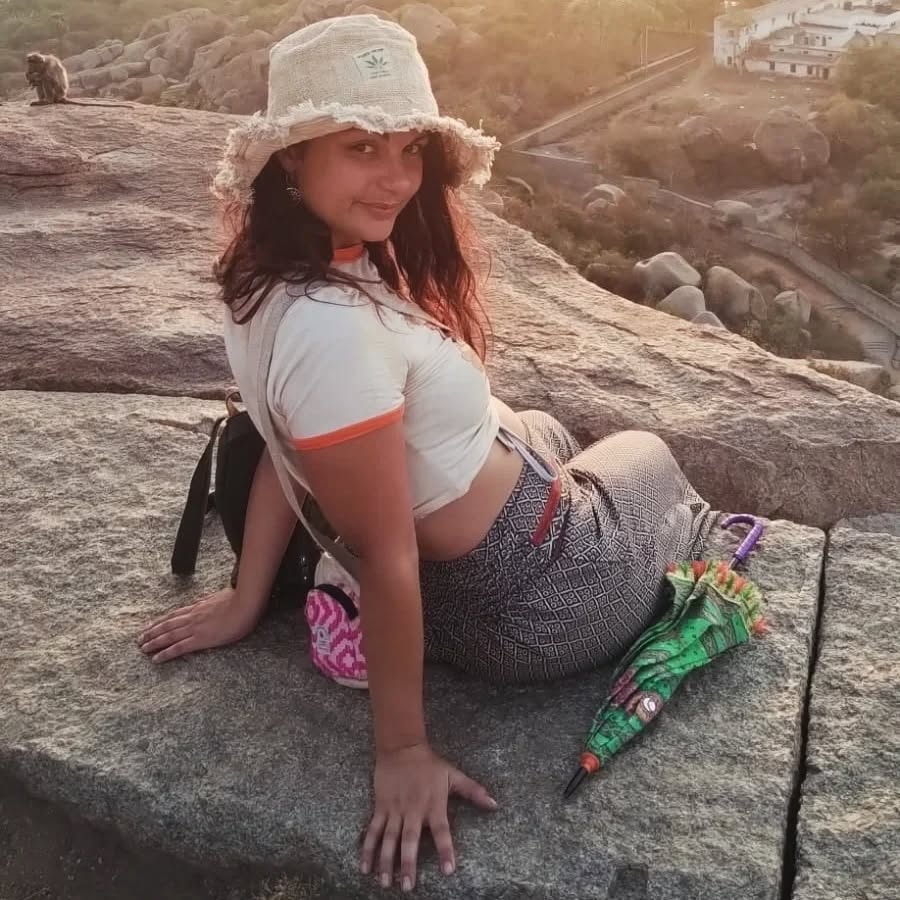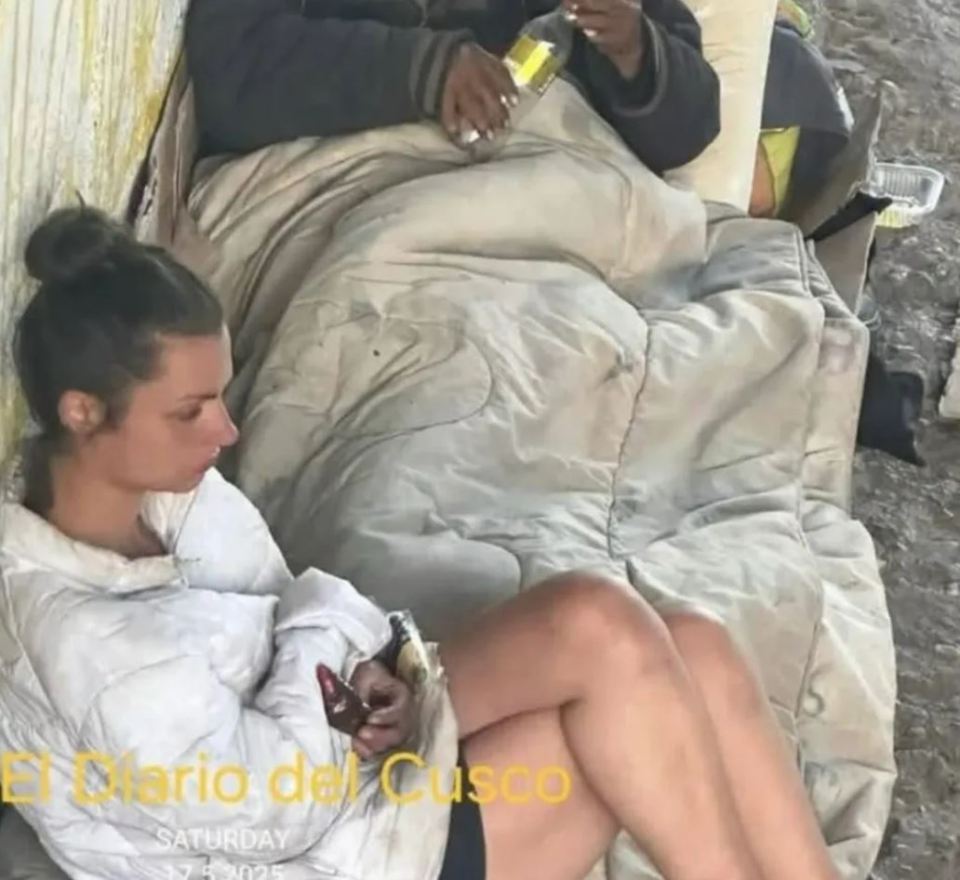‘I step outside into a cacophony of nature’: an off-grid escape in the west of England | England holidays
Any deviation from the beaten track comes with moments of uncertainty. Is this the right dirt track? Is our progress going to be thwarted at any moment by an impenetrable thicket, or worse still an implacable landowner who will force a ham-fisted reverse? As it turns out, we are only temporarily stalled by two male peacocks jousting in the middle of the lane in a kaleidoscopic blur of feathers and fury. We wait for them to retire to the grass verge and continue to bounce up the track until we see a sign for our cottage pointing to the left. This leads us deeper into a woodland of oak, ash, birch and Douglas fir, until we finally see a brick-and-stone house standing in a clearing set back from the trail.
From the outside, Van Cottage looks like a pioneer homestead, with a crooked stone chimney to one side and a metal-roofed veranda to the other. Around the corner there’s a wood-fired hot tub, and beyond the garden fence in a little forest glade is a small brick dunny. The house sits on a ridge, and the garden offers views over the carmine-coloured ploughed fields and billowy woodland of Herefordshire.
This pioneer spirit continues inside, where there’s a kitchen with a wood-fired range, and an oak-beamed living room with a wood burner, a comfy sofa and a range of books. A wall of old oak boards has retained remnants of the wallpaper of previous occupants, adding a patina of history. The original two-up, two-down stone cottage dates back to the 18th century and a brick extension was added in the mid 19th century. Upstairs, there are two bedrooms, a shower room and a sink overlooked by a mirror encased in an old leather horse collar, in keeping with the cottage’s farm-labourer origins. But the most recent renovation has converted it into a wood- and solar-powered off-grid escape.
My own idea of an off-grid escape has roughly conformed to the same blueprint since I read a line in Albert Bigelow Paine’s The Tent Dwellers many years ago: “Then away to the heart of the deep unknown, where the trout and the wild moose are. Where the fire burns bright, and the tents gleam white, under the northern star.”
In our current deep unknown, a fleeting glimpse of a roe deer as I make my way to the outside dunny will have to make do for the wild moose. But we get the fires burning bright in the stove and the hot tub and then strike out around fields of buttercups and clover to walk down to a lake stocked with trout on the nearby Whitfield Estate. As I cast a line out over the water, a red kite circles in the thermals above and the chirrup of a redstart in an oak provides the melodic soundtrack. After thrashing the water until dusk, I walk away empty-handed but content.
Back at the cottage, we lower ourselves into the outdoor hot tub, which has reached a tolerable temperature, and watch the stars gleam white as a blanket of darkness envelopes the cottage and a tawny owl hoots in the distance.
The next morning, the realisation of being off-grid truly kicks in. While I wait for the kettle to boil – a full 30 minutes as I neglected to keep the stove stoked overnight – I step outside and into a cacophony of nature. My bird app identifies chiffchaffs, wrens, great tits, blackcaps, blackbirds, nuthatches and a woodpecker. A startled hare skitters beyond the garden fence and a group of female pheasants saunter by. The only thing missing from this Disneyesque scene is a flotilla of butterflies.
The thing about waiting for a kettle to boil is that it forces you to slow down. So I occupy my time by reading the cottage’s literature, in which I discover that nearby, on the A465 to Hereford, is Lock’s Garage, described as “one of the great frontier stores in the whole country”. The notion of a frontier store in the UK is new to me, but it plays perfectly into my romanticised notion of backwoods living. The reality, when I arrive at Lock’s Garage later is a little more prosaic. It’s a petrol station with a Londis storefront. But I soon discover that it’s so much more besides. Outside, the fruit and veg shelves display trays of giant papaya, agave leaves, dragon fruit, lychees and nashi pears. And inside the fridges are laden with grass-fed Hereford beef and rare-breed pork, some from the owners’ own farm. There’s cheese from Hereford and Wales, and local beers and wine. We come away with sausages and steaks for the barbecue that evening.
after newsletter promotion
We spend the next few days in leisurely exploration – dog walks in the Big Wood surrounding the cottage, where there are signs of tree-cutting and squirrel traps on high platforms. One day, we walk down into Kilpeck village, where grotesque medieval motifs guard the porch of the Church of St Mary and St David, which architectural historian Nikolaus Pevsner described as “one of the most perfect Norman churches in England”. We explore the ruins of the Norman motte and bailey castle overlooking the church, and a painterly landscape beyond of barns and grazing Hereford cows. We stop for lunch at the Kilpeck Inn, where we dine on sea bream with cauliflower and brown butter puree, and local cider, before walking it off on a stretch of the Herefordshire Trail.
On other days we head into Hay‑on‑Wye to browse the bookshops, and walk country lanes around Skenfrith Castle, just over the border in Monmouthshire. But mostly we spend the time sitting outside listening to birdsong, pulling books from the shelves and deciding our daily menu. It’s surprising how fully so little can occupy you without a television to fill in the gaps. And even though the cottage has broadband, our laptops remain unopened throughout the visit. We replace doomscrolling with keeping the home fires burning in the range and the hot tub. Each evening is spent with a saunter down to the lake in pursuit of an elusive trout. And each evening I return to the cottage with an empty net, but with a lightness of being after another day in the “heart of the deep unknown … and under the northern star”.
The trip was provided by The Cottage Company. Van Cottage, which sleeps four plus two dogs, has three-night breaks from £475








